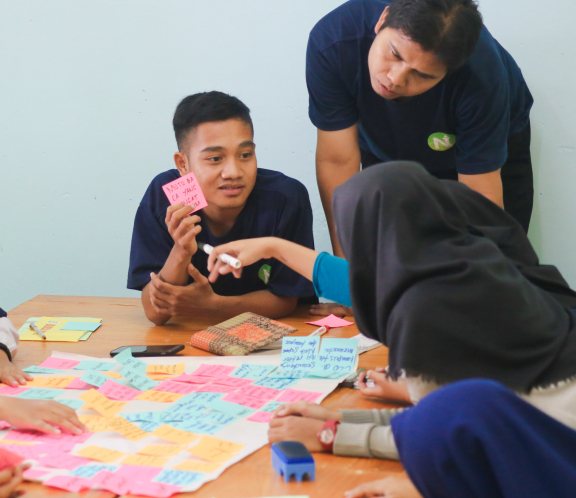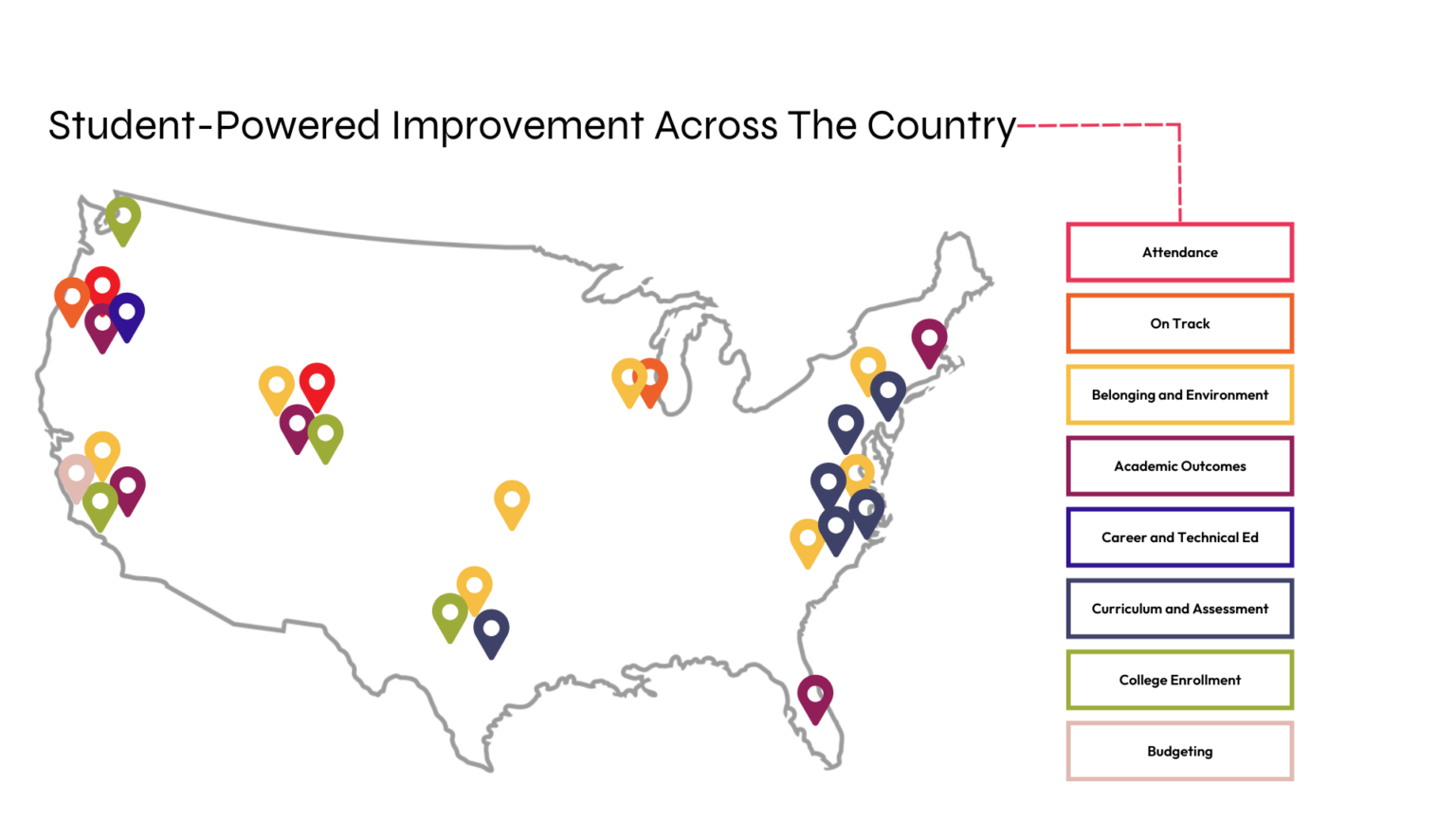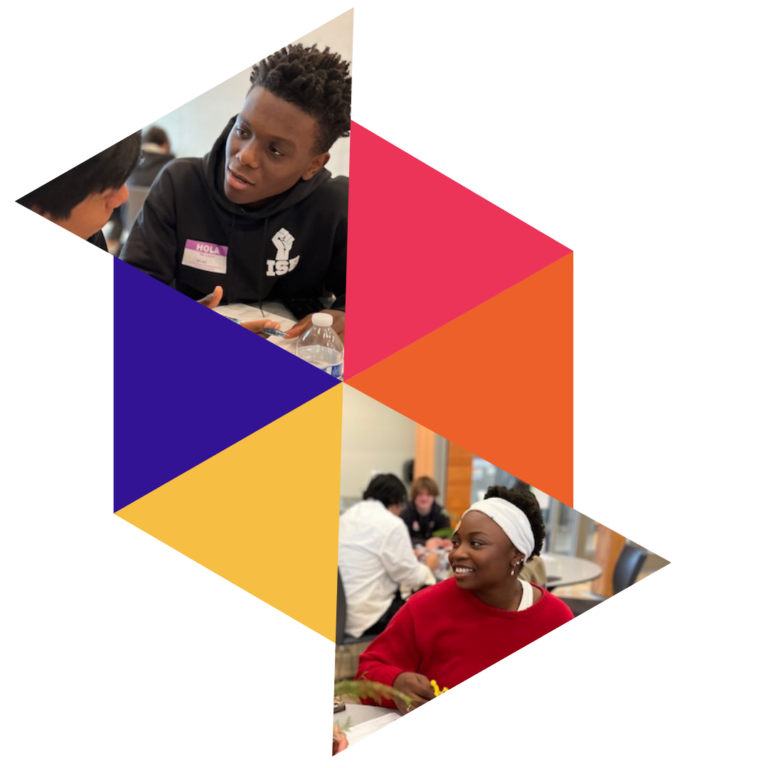Unlock the power of student voice to solve persistent problems in school communities. When adults design with students instead of for students to make change, powerful shifts in learning are possible.
















Literacy. Mathematics. Postsecondary planning. School climate. Mental health. Attendance. Educators across the country are working hard to improve student experiences and outcomes. Solutions to education’s most complex problems should be designed with students rather than for students. Through empathy, partnership, and reimagining power in schools, student-powered improvement leads to solutions that better meet students’ needs.

Involve students to create solutions that address their specific needs and challenges.

Value every student’s identity, strengths, and needs as a key practice.

Trust students as active partners in decision-making.

Co-create environments where students can profoundly shape their schools and communities.
Discover how Community Design Partners can help you transform education in your classroom and beyond.
Unlock the potential of Student-Powered Improvement with tailored workshops.

Transform challenges into innovative solutions with a Student-Powered design sprint for teams to explore problems, iterate solutions, and create actionable solutions.

Build a collaborative culture to deeply understand persistent problems and elevate research-based solutions through long-term, student-powered improvement projects.
When students feel heard, they find school more motivating, engaging, and relevant.
Students who believe they have a voice in school are 7 times more academically motivated.
(Quaglia Institute for School Voice and Aspirations, 2014)
96% of student participants in a 9th grade Student-Powered Improvement network felt equipped to help improve their schools.
(NWRESD Student Network, 2023)
Every educator who participated in a Student-Powered Improvement workshop felt the learning was immediately applicable to their work back at school.
(Carnegie Summit, 2024)
In a Student-Powered Improvement math classroom, 27 percent more students felt their math classroom was meaningful in the spring compared with the fall.
(PERTS survey results, 2023)




